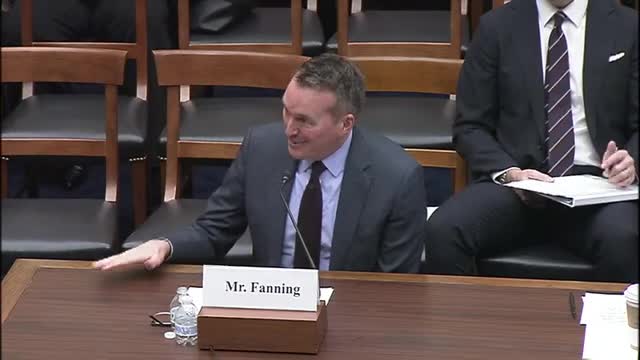Aerospace leaders stress skilled labor recruitment and training for workforce resilience
February 28, 2025 | Armed Services: House Committee, Standing Committees - House & Senate, Congressional Hearings Compilation
This article was created by AI summarizing key points discussed. AI makes mistakes, so for full details and context, please refer to the video of the full meeting. Please report any errors so we can fix them. Report an error »

The U.S. House Armed Services Committee meeting on February 28, 2025, spotlighted a pressing issue: the critical need to strengthen America's defense industrial base (DIB) through workforce development and supply chain resilience. Key discussions revealed a consensus on the urgent workforce shortages facing the aerospace and defense sectors, emphasizing the importance of skilled labor in maintaining national security.
Mister Norquist highlighted the necessity of reducing reliance on foreign parts while fostering robust partnerships with NATO allies. He noted that over 50% of the world’s GDP comes from these allies, making them vital suppliers and buyers for U.S. defense products. "It’s beneficial to have allies take advantage of and buy from the U.S.," he stated, underscoring the reciprocal nature of these relationships.
The conversation then shifted to workforce challenges, with committee members stressing the importance of attracting and retaining skilled labor. Mister Cisneros pointed out that while companies invest in higher education, there is a significant need for manual laborers—those who physically build defense systems. Norquist responded by emphasizing the complexity of skilled labor roles, such as advanced electricians and welders, and the need for industries to recruit, train, and retain these workers.
Both Norquist and Mister Fanning echoed concerns about the shift away from vocational training in favor of liberal arts education, which has undervalued skilled labor careers. Fanning noted that many jobs in the defense sector pay significantly above the national average, yet the perception of these roles needs to change to attract new talent. He shared an example of a Kansas company that recruits from farms, seeking individuals with experience in operating heavy machinery, to build a pipeline of skilled workers.
The meeting concluded with a call to action for the defense industry to recognize and promote the value of skilled labor, ensuring that these careers are seen as viable and rewarding. As the U.S. navigates a complex global landscape, the development of a robust workforce in the defense sector remains a top priority, essential for both economic stability and national security.
Mister Norquist highlighted the necessity of reducing reliance on foreign parts while fostering robust partnerships with NATO allies. He noted that over 50% of the world’s GDP comes from these allies, making them vital suppliers and buyers for U.S. defense products. "It’s beneficial to have allies take advantage of and buy from the U.S.," he stated, underscoring the reciprocal nature of these relationships.
The conversation then shifted to workforce challenges, with committee members stressing the importance of attracting and retaining skilled labor. Mister Cisneros pointed out that while companies invest in higher education, there is a significant need for manual laborers—those who physically build defense systems. Norquist responded by emphasizing the complexity of skilled labor roles, such as advanced electricians and welders, and the need for industries to recruit, train, and retain these workers.
Both Norquist and Mister Fanning echoed concerns about the shift away from vocational training in favor of liberal arts education, which has undervalued skilled labor careers. Fanning noted that many jobs in the defense sector pay significantly above the national average, yet the perception of these roles needs to change to attract new talent. He shared an example of a Kansas company that recruits from farms, seeking individuals with experience in operating heavy machinery, to build a pipeline of skilled workers.
The meeting concluded with a call to action for the defense industry to recognize and promote the value of skilled labor, ensuring that these careers are seen as viable and rewarding. As the U.S. navigates a complex global landscape, the development of a robust workforce in the defense sector remains a top priority, essential for both economic stability and national security.
View full meeting
This article is based on a recent meeting—watch the full video and explore the complete transcript for deeper insights into the discussion.
View full meeting